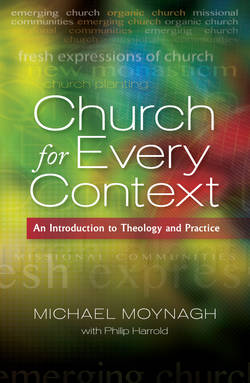Читать книгу Church for Every Context - Michael Moynagh - Страница 83
На сайте Литреса книга снята с продажи.
Adapting to the denomination
ОглавлениеFresh expressions of church have sought to adapt to local constraints in two directions. One has been the denomination. An example was the Methodist Church’s embrace of the Fresh Expressions initiative, which appealed to evangelical Methodists’ commitment to evangelism and to Methodists’ strong commitment to ecumenism. Ticking both boxes greatly helped the church to get on board. Within the Church of England, Archbishop Rowan has connected emerging church to the parochial system by suggesting that ‘both assume that the Church must show itself credible by being where people are, literally and culturally’ (Williams, 2006, p. 54). He has linked fresh expressions to the Anglo-Catholic tradition, noting that ‘catholic’ is ‘that dimension of the Christian life which is concerned with speaking the whole truth to the whole person’ (Williams, 2009, p. 1).
The suggestion – by the Fresh Expressions team and others – that these new communities will often start with listening, followed by loving and serving, potentially resonates with traditions that emphasize the social responsibilities of the church. The parallel emphasis on evangelism strikes a chord with evangelicals.
In addition, new contextual churches are recovering inherited traditions and ‘remixing’ them with contemporary cultural trends, such as the use of visual images and symbols from the tradition. The spread of ‘new monasticism’ is giving an impetus to this. Growth into the tradition often happens in surprising ways. A London-based ‘heavy metal’ gathering, for example, shares in some of the activities of its neighbouring Anglo-Catholic church.
Explicitly connecting with the tradition is helping new contextual churches to make their home in the body. At the same time, the denominations are finding ways to recognize them and help them be accountable. This is happening reflexively. As fresh expressions are drawn into a denomination’s culture, they model different ways of being church. For growing numbers of worshippers, the pattern of church life ceases to be a given and becomes a matter of intent. As individuals look again at what it means to be church, attitudes become more flexible, making it easier for the denomination to welcome the new.
